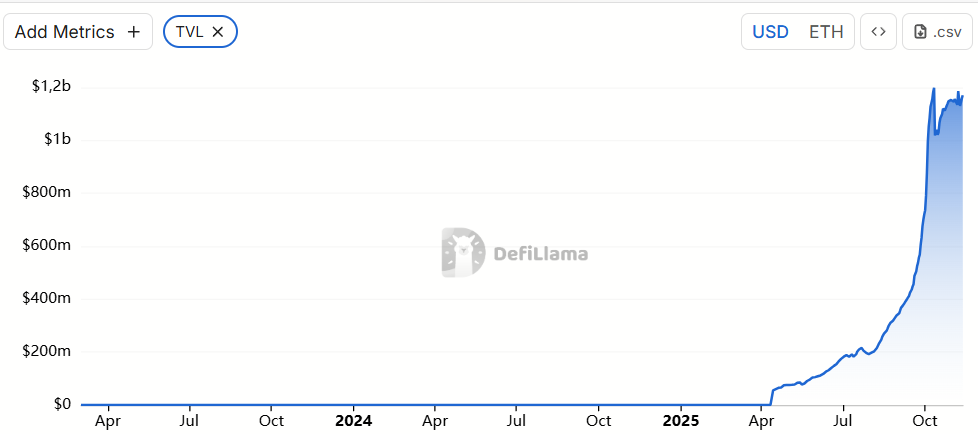A newcomer with a zero-fee pitch just sprinted to the front of onchain derivatives. Lighter, a decentralized exchange built on a custom ZK rollup, disclosed a $68 million raise even as it climbed to the top of the perpetual-futures DEX leaderboard by trading activity.
Why it matters
- Perp DEXs are becoming cryptos highest-velocity venues; Lighters ascent shows traders are willing to move quickly for speed, latency, and economics.
- Backers like Founders Fund and Ribbit Capital signal mainstream venture conviction in onchain derivatives infrastructure.
- Zero maker/taker fees can turbocharge growthbut sustainability, reliability, and market structure risks remain front and center.
The raise and the roster
Lighter closed a $68 million round co-led by Peter Thiels Founders Fund and Ribbit Capital. According to a Fortune report, Haun Ventures and Robinhood also participated, valuing the company at roughly $1.5 billion. The financing lands less than three years after the projects inception and underscores the markets appetite for high-throughput, non-custodial trading venues.
The volume race, by the numbers
Per DefiLlama, Lighter is currently the largest decentralized perps exchange on daily and weekly horizons, with around $11.2 billion in 24-hour turnover and more than $67.7 billion on a weekly basis. Over 30 days, it ranks No. 2 at $284 billion, trailing Asters $313.3 billion.

The broader backdrop is a sector that just posted its strongest month on record: decentralized perpetuals exceeded $1 trillion in trading volume in September, nearly 50% above August. Liquidity, incentives, and exchange-native tokens have created an arms race for order flow across the leading venues.
Product playbook: a custom ZK rollup and no-fee trades
Founded in 2022 by former AI entrepreneur Vladimir Novakovski, Lighter operates a decentralized exchange on its own ZK rollupan Ethereum Layer 2 tuned for speed and cost efficiency. The team launched a private beta in January before opening the public mainnet on Oct. 1.
A key differentiator has been its current fee structure: standard accounts pay no taker or maker fees, letting retail users trade across listed markets without those charges. That economic edge appears to have accelerated liquidity flywheels alongside aggressive incentives.
Capital flows and traction
Total value locked crossed $350 million by September and stands around $1.1 billion todaya surge of more than 1,400% since January.

Reliability under stress: the Oct. 10 lesson
Hypergrowth hasnt been painless. Just nine days after mainnet launch, Lighter suffered a significant outage during the sharp Oct. 10 market selloff. The team acknowledged the infrastructure couldnt handle the traffic spike and said it would expand database capacity. Users collectively lost around $50 million during the event, according to the project, and were compensated with Lighter points redeemable in a future token airdrop.
Competitive dynamics: Hyperliquid, Asterand the VC angle
Since Hyperliquid debuted its HYPE token last November, it has largely set the pace for decentralized perps. In recent months, Lighter and Aster have carved out meaningful share, powered by incentives and faster L2 stacks.
Tomas Fanta, principal at crypto investment firm Heartcore, told The Defiant that Hyperliquids success seeded a wave of copycat launches with little true innovation, noting that many traditional venture fundsthose that cant deploy into liquid tokenshave been sidelined by HYPEs performance. That vacuum, he argues, created an opening for a new challenger to attract VC capital. Still, he cautions that Hyperliquids no-VC narrative and community rewards have been central to its riseand hard to replicate.
Strategic roadmap
Novakovski told Fortune that Lighter intends to expand beyond perps into spot markets for major assets like Bitcoin. No timeline has been disclosed, but broadening venue breadth could deepen liquidity and reduce user churn between exchanges.
What were watching
- Sustainability of zero-maker/taker pricing: Without these fees, revenue may hinge on funding payments, spreads, or ancillary services. How long can the platform subsidize trading before unit economics need to tighten?
- Reliability upgrades: The Oct. 10 outage was a stress test. Execution quality across volatility spikes will decide whether professional flow sticks.
- Token and incentives: Points-based rewards and any airdrop mechanics could reshape market share. Design choices will influence liquidity depth and retention.
- Regulatory pressure: Perps remain sensitive territory, especially for U.S.-facing platforms. Compliance posture and geofencing will matter as volumes climb.
The bigger picture
Onchain derivatives have moved from experiment to product-market fit. Lighters combination of a dedicated high-performance rollup and trader-friendly economics is the latest proof pointbut the ultimate winners will be those that pair growth with uptime, transparent risk management, and a clear path to sustainable revenues.
